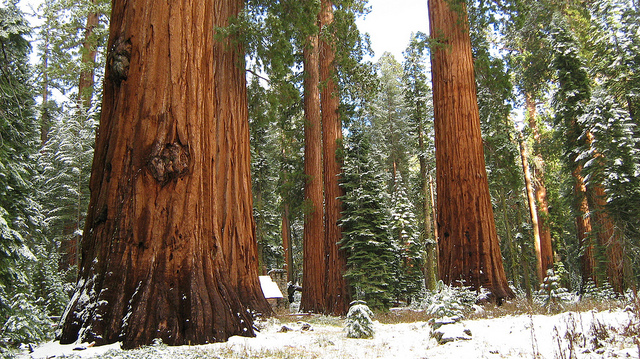
Have you ever wondered where forests come from? If you’ve ever taken a hike in a wooded area, it’s probably struck you what a diverse environment the forest is. There are all sorts animals, birds, plants large and small. A wondrous diversity of creatures co-exist in apparent balance and harmony.
But how did forests come into existence in the first place?
Scientists have studied the process of ecosystem formation and have extensive theories about how all sorts of environments come into being. There seems to be an orderly process of development that has some common characteristics no matter what kind of environment we’re talking about. Given the right conditions, ecosystems tend to develop greater complexity and variety over time.
For example: Let’s say that a glacier has just receded, leaving exposed a terrain of totally bare rock. There are very few forms of life that can survive in such an environment, but there are a few – maybe some kind of moss or algae. These “pioneer species” start growing on the bare rock. And that might be all there is for a while. But as these hardy little organisms grow and die, they begin to build up a layer of organic matter. Dirt.
Eventually, there’s enough dirt that some grasses can take root. Once the grass has lived and died a few million times, perhaps there will be enough soil for shrubs, and other, larger plants. If enough time passes and the conditions are right for it, there will eventually be soil that is rich and thick enough to support even the largest trees – not to mention a variety of insects, rodents, and larger animals.
OK, are you still with me? I don’t normally give science lessons – mostly because I’m not a trained scientist – but I have a purpose in telling this story of ecosystem development. The emergence of ecosystems provides an excellent model for how we can understand the growth of human systems – culture, government, and technology.
I even think it can provide some insight into how the church functions. What is the church, after all, but an interrelated web of relationships, held together by a common commitment to walking in the way of Jesus?
The Christian ecosystem has been around for a long time, so it’s gotten pretty complex and robust. The apostles and martyrs acted like moss and algae, dying again and again in order to make space for a community of greater depth and complexity. Through centuries of struggle, patient endurance, and courage, we’ve developed into an old-growth forest with towering, ancient trees.
This maturity has advantages. In the 19th and 20th centuries, the church produced a wealth of colleges and seminaries, charitable organizations and missionary societies, and all sorts of movements for social change, such as the abolition of slavery. The sheer size and complexity of the Christian community has given us power to profoundly impact our society.
Yet, there’s a shadow side to ecosystems that reach late-stage maturity. All those big trees cast a lot of shade. In particularly dense areas, the forest floor might be dimmed to twilight even in the middle of the day. When the largest trees become predominant, they have the tendency to destroy the conditions where earlier, smaller forms of life have flourished. All those grasses and shrubs that helped to pave the way for the great cedars have their growth stunted by the penumbra of the wooded canopy.
Prophetic movements within the church have always been critical of the hubris of the big trees – the largest church institutions, often directly connected with systems of political, economic, and cultural power. Radical movements like the Franciscans, Anabaptists, Quakers, and Pentecostals punch a hole through the canopy to let some light shine in. These movements reclaim some space for the tiny, the simple, the unadorned creatures of the forest floor.
We live in a time today when many of the ancient trees of the Christian forest are teetering. Denominations are breaking apart. Established ways of doing things are coming into question. Parachurch organizations struggle to articulate their mission and purpose in a rapidly changing world. For many in the church, this is a profoundly scary time. It is a time of diminishment in many ways – of the Christian community’s social standing, prestige, and directive influence over our culture.
For those of us in the prophetic stream, however, this is a moment to rejoice. After centuries of punching holes in the canopy to let the light shine in, it seems that the great trees may fall down altogether. This is a new day, the first opportunity for uncut brightness in centuries. As the trees of the Christendom church begin to tremble and collapse, we are on the verge of a new era of crabgrass Christianity.
Much of the Christian world is in mourning over the state of the trees; we fret over the downgraded status and political influence of the Western church. But what would happen if, instead of looking up with fearful eyes to the trembling canopy, we directed our gaze to the grassroots that are suddenly being flooded with light for the first time in God knows how long? What are the new opportunities that await us in this new day of sunlight?
Related Posts: